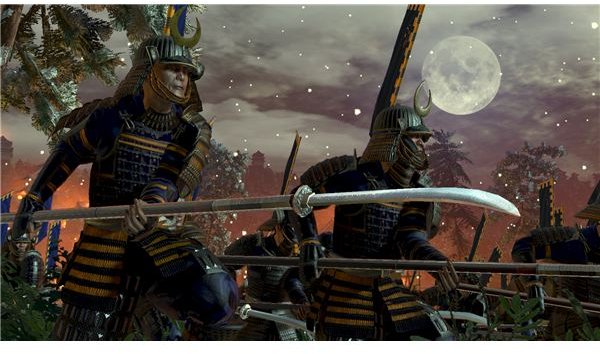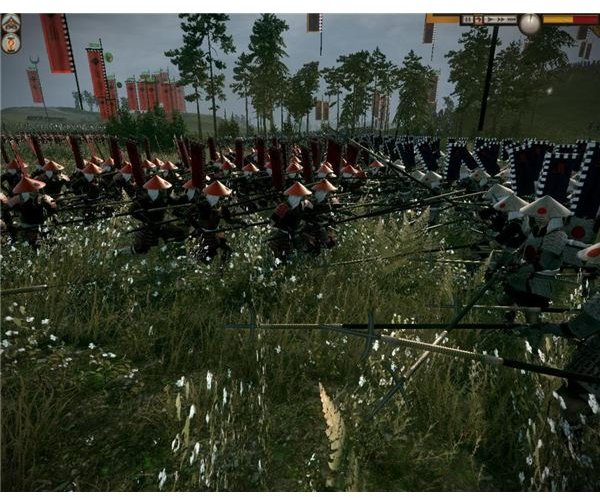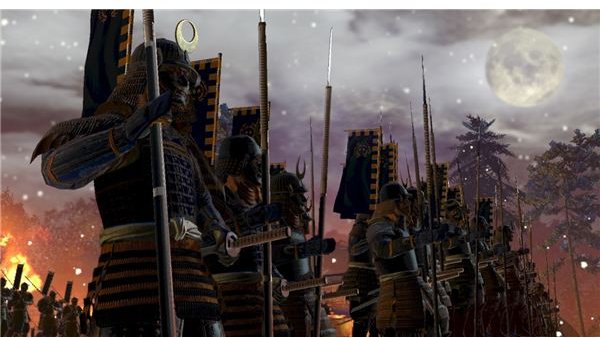Shogun 2: Total War Units - What Units are the Best?

Shogun 2 Total War Unit Guide
Shogun 2: Total War is a game of strategy and tactics. Unlike many games, you can’t deploy more units on the battlefield than you start with. What you have is it, and you need to make smart use of your units if you want to win.
Of course, it’s hard to make smart use of your units if you don’t know what they do! This Shogun 2: Total War unit guide will help you understand what you can deploy on the battlefield.
Unit Types
While it would be possible to go through and list every unit in Shogun 2: Total War, it wouldn’t be very efficient. That is because units in the game are essentially broken up into certain “types” based on their weapons of choice.
Bow - Bow equipped units are the most basic ranged units in Shogun 2: Total War. They’re able to rain a deadly metal hail against opponents, and they’re able to easily fire over walls. Bow units are great forcing an opponent to fight a battle on your terms, and they’re also great in siege battles. Bow units are equipped with melee weapons, but will lose against similarly trained melee units.
Gun - Units equipped with guns (matchlocks) imported from Europe can do incredible damage to enemy units quickly. However, guns have shorter range, don’t reload as quickly, and can’t fire over walls and allied units. They’re great for defending a fortification or fighting on an open battlefield, but not good for attacking an enemy fortification or fighting in dense terrain.
Naginata - Similar to the Yari, the Naginata a spear-like weapon with a broader blade that is given to some elite troops, like Naginata Warrior Monks and Nagainata Samurai. This weapon is a compromise - it’s good at everything, but not amazing at any one task. However, Naginata units tend to be strong because this weapon is only given to highly trained warriors.
Siege - A number of cannon and rocket units exist for siege situations. These units offer great range and the ability to do considerable damage against static units. However, these units tend to be expensive, and they’re entirely useless in direct combat.
Sword - Units equipped with swords, such as the Katana and the No-Dachi, are very effective in melee combat against infantry. They tend to be weak against calvary, however, as they often take great losses from a calvary charge. Still, sword units are the best choice for melee slug-fests.
Yari - Yari is the Japanese word for spear. Units equipped with the Yari are particularly good against calvary. Most Yari units have a respectable charge bonus, as well (in other words, they’re great for charging in for an attack). Yari units can do well against sword infantry with proper training, but cost-for-cost a sword unit is typically superior in melee.
Now, with this addressed, let’s talk about the different levels of training you’ll find among these unit types.
Ashigaru

The basic foot-soldiers of Japan, the Ashigaru were historically peasants pressed into military service or members of the warrior class who were not recognized as Samurai - often because they’d not completed, or had not been allowed to complete, the proper training.
In Shogun 2: Total War, Ashigaru are the cheapest units to recruit and maintain. As you might expect, they’re also the least well armored and least dangerous. Morale is the biggest problem with Ashigaru, as they can break ranks quickly if they are flanked or charged by a powerful unit. That can lead to a chain-effect where other Ashigaru units, seeing the first flee, also decide to run.
With that said, Ashigaru are a great way to keep an enemy unit occupied, or breach a gap in your own line. For example, you might use a unit of Yari Ashigaru to delay the charge of some enemy Katana Samurai. The Yari Ashigaru is almost certainly going to lose, but they’ll keep the enemy from using the Samurai as he intended.
Note: Some units are not called Ashigaru, but behave like them. Light Calvary, for example, as essentially Ashigaru Calvary - they’re lightly armored, have low morale, but are cheap.
Samurai

A step up from Ashigaru, you can find Samurai in a wide variety of types, from Bow to Sword to Calvary and more. Samurai are better trained than Ashigaru, and they have better equipment. This means they’re far more likely to stay engaged in a battle, which makes Samuri the basic unit used on the front line of most armies.
However, Samurai are expensive, and fewer in number. This is the fundamental trade-off; if you field Samurai, you will have a front line that is stronger in combat and less likely to flee. But if your enemy fields a large number of Ashigaru, he could overwhelm you and flank your army.
Samurai should be used on the front line of battle, at points in your line that can’t be allowed to route. They should not be thrown away, but treated carefully. Losing a unit of Samuri without inflicting significant losses on an opponent is a major problem that can turn the course of a battle.
Warrior Monks

As you progress in single-player and multi-player you will gain access to warrior monks. Warrior monks are like Samurai in that they’re highly trained, but they’re different in how they train. While Samurai rely more on force and are heavily armored, warrior monks have light armor and focus on actively defending themselves by dodging or deflecting attacks.
The biggest advantage of monks is their morale. They’re insane in combat, and will rarely flee. It’s not unusual for them to fight to the very last man even against impossible odds. Even Samurai look like whining sissies next to these guys. Monks are also extremely skilled in combat, so they’re able to dish out the pain. However, monks are very expensive, so they’re not practical for use in large numbers. An all-monk army would be easily surrounded and overwhelmed. The light armor of monks leaves them vulnerable to bow and gun attacks, as well.
Generally speaking, monks should be reservered from the most critical missions. If you see that an enemy is likely to flank you in a certain area, and there is little you can do to stop it, that is where your monks should go. If you need to breach a portion of an enemy fortification and failure is not an option, that is where your monks should go.
Conclusion - Special Units
You now have the basic information you need to figure out what a unit does. Yari Calvary, for example, have an incredible charge and are quite good against other calvary units, but will be in trouble if tied up in melee with Katana Calvary or any sword infantry. Bow Samurai fire arrows and have good morale, even if they’re caught in melee.
However, there are some special units in Shogun 2: Total War. For example, if you play the Date clan you will have access to the Date No-Dachi Samrui. These special units are generally slight improvements over the base unit. The Date No-Dachi, for example, has a slightly better melee attack rating, a slightly higher charge bonus, and slightly higher melee defense. Otherwise, they’re identical to the base unit.
That’s not to say that some units are very unique. Ninja, for example, have a stealth ability and can deal a lot of damage in melee, but are very few in number. Most units, however, fit within the rules outlined above.
References
Creative Assembly: Total War: Shogun 2 Encyclopaedia
Image Credits: Shogun 2 Heaven, Creative Assembly
